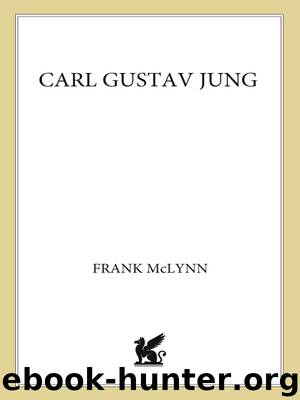Carl Gustav Jung by Frank McLynn

Author:Frank McLynn
Language: eng
Format: epub
Publisher: St. Martin's Press
Published: 2014-07-23T16:00:00+00:00
Chapter Seventeen
VALKYRIES AND OTHER WOMEN
From 1927–35 Jung gave up his hitherto frequent visits to the English-speaking world where, particularly in the USA, his popularity went into a temporary decline as his new mystical doctrines alienated many supporters.1 His physical existence was limited to the yin and yang of Küsnacht and Bollingen, attendance at conferences in the German-speaking countries, and summer holidays in the Engadine. By now his children were growing up, so the summer idylls he had spent with them during 1918–23 were a thing of the past. Those were the years, before the building of the Bollingen tower, when he and his family spent the summer holidays on an island at the mouth of the Linth canal, at the upper end of Lake Zürich. The children would play at pirates and Indians, in the manner of J.M. Barrie’s lost boys, and Jung would act as the un-Hooklike captain. Jung was always a hearty exponent of the Swiss cult of the great outdoors, and encouraged his children to live in tents and to master sailboats, row boats and canoes. The family would buy their provisions in Schnerkon, twenty minutes away by row boat and, lacking refrigerators, would bury perishables in the ground to keep them cool. Water came from the lake, firewood could be collected in the forest. Only if the children were ill would Jung allow the ‘luxury’ of an overnight stay in the cabin of his beloved sailboat The Pelican.2
Such things were sentimental memories by the late 1920s. Jung withdrew more and more into the isolation of Bollingen, where he took to running up a flag as a sign that he was on no account to be disturbed.3 A glimpse of the prophet in splendid isolation comes in a letter to an American admirer on 19 December 1927, when Jung reports that he is marooned in his tower, ‘actually buried in the snow of a fierce attack of winter, unusually cold for our climate.’4 As mentioned before, 1927 was the year of the building of the Bollingen annexe, when the French soldier’s body was discovered, and the year when Jung perfected his mastery of the stone-mason’s art, to the point where he needed just two workmen to help him on the extensions.5
Jung usually holidayed in the Engadine in August, following a mandatory period of Army service in July – for until the age of fifty-five he was still subject to call up for the reserve as a military doctor.6 He was a familiar figure at psychological conferences in Germany and Austria, where he frequently clashed with Freud’s supporters, though he never again met the Master himself. He was invited to lecture at the prestigious though highly conservative Kulturbund in Vienna on 21–22 February 1928 and thereafter was frequently invited back.7 Freud was annoyed to find the enemy holding forth in his city.
In 1929 Jung learned to drive and by 1930 he could often be seen driving like Mr Toad through the twisting streets of Zürich in his new red two-seater Chrysler.
Download
This site does not store any files on its server. We only index and link to content provided by other sites. Please contact the content providers to delete copyright contents if any and email us, we'll remove relevant links or contents immediately.
| Behaviorism | Cognitive Behavioral Therapy |
| Existential | Gestalt |
| Humanistic | Jungian |
| Psychoanalysis | Transpersonal |
The Art of Thinking Clearly by Rolf Dobelli(10208)
The 5 Love Languages: The Secret to Love That Lasts by Gary Chapman(9582)
Mindhunter: Inside the FBI's Elite Serial Crime Unit by John E. Douglas & Mark Olshaker(9186)
Becoming Supernatural by Dr. Joe Dispenza(8119)
Nudge - Improving Decisions about Health, Wealth, and Happiness by Thaler Sunstein(7611)
The Road Less Traveled by M. Scott Peck(7522)
Enlightenment Now: The Case for Reason, Science, Humanism, and Progress by Steven Pinker(7226)
Mastermind: How to Think Like Sherlock Holmes by Maria Konnikova(7221)
Win Bigly by Scott Adams(7094)
The Way of Zen by Alan W. Watts(6503)
Factfulness: Ten Reasons We're Wrong About the World – and Why Things Are Better Than You Think by Hans Rosling(4691)
The State of Affairs by Esther Perel(4633)
Gerald's Game by Stephen King(4570)
Man's Search for Meaning by Viktor Frankl(4416)
The Confidence Code by Katty Kay(4186)
Thinking in Bets by Annie Duke(4152)
The Healing Self by Deepak Chopra(3473)
Hidden Persuasion: 33 psychological influence techniques in advertising by Marc Andrews & Matthijs van Leeuwen & Rick van Baaren(3472)
The Worm at the Core by Sheldon Solomon(3430)
